If you’ve watched Wang Chuqin play, you already know it’s wild, fast loops, nasty spin, and full of fire. A big part of that is his finely tuned weapon: the racket. And just like his playstyle, Wang’s racket setup has gone through some profound changes over the years.
This post is all about what makes a pro racket, how Wang’s gear has evolved, and a few stories along the way, some cool and some kinda painful.
Table of contents
What Makes a Pro Racket?
Before we go full nerd on Wang Chuqin’s setups, let’s quickly talk about what a racket means at the pro level.
- Blade: Think of this as the skeleton of the racket. Some are all-wood, while others are mixed with carbon or arylate layers for extra power and stability. It decides how fast the ball goes, how much control you’ve got, and how the thing feels in your hand.
- Rubber: Each side of the blade has a rubber sheet with a sponge underneath. The rubber works with the blade to create grip, spin, and bounce. Each rubber can have distinct features. Most pros, including Wang Chuqin, use inverted rubbers with smooth surfaces on both sides. Some are tacky for max spin, while others are fast and bouncy for quick attacks. Other types like short pips, long pips, and antispin are mainly used based on the player’s preference.1
A top player will hand-pick a blade and two rubbers that suit their playstyle. Some prefer a flexible all-wood blade for more control, while others opt for carbon layers for extra power. And usually, a sticky, hard rubber on the forehand for max spin and a faster, more forgiving one on the backhand for speed and quick hands.
Once glued up, that racket becomes the player’s trusted weapon. Top players know their rackets feel like the back of their hand – sweet spot, rebound, spin response – everything. Even a small change, like a different sponge thickness or a slightly harder blade, can mess with timing and touch.
This is why any change to the racket, whether a new rubber or a different blade, is a big decision. It typically aligns with a player’s growth and evolution on the table. Wang Chuqin’s been through a few of these gear shifts. Each one is tied to a phase in his career. Let’s take a look.
(Also worth noting: most pros use custom rackets with factory-tuned materials and craftsmanship. Commercial versions named after players might share branding and structure, but aren’t exactly identical to the pros’ gears.)
Wang Chuqin and DHS Q968 “Hurricane King” (2023 – Now)
- Blade: DHS Q968 “Hurricane King”
- Forehand Rubber: DHS Neo Hurricane 3 National Blue Sponge (41.5°, 2.1mm)
- Backhand Rubber: DHS Neo Hurricane 3 National Orange Sponge (38°, 2.1mm)
Right now, Wang Chuqin’s rocking a custom DHS Q968 Hurricane King blade. The name is a play on his last name, “Wang” (王), which literally means “king” in Chinese. It was his first full collab with DHS, dropping at the Singapore Smash in March 2023.
This blade is tailor-made for Wang Chuqin. It’s basically a personalized upgrade of his previous blade, the W968, aka Hurricane Long 5, using the same 5+2 structure: five wood plies and two inner carbon layers. DHS gave it a black flare handle with new dragon graphics, and some versions even have a portrait of 18-year-old Wang Chuqin 🥰 printed on the bottom of the handle. Real custom vibes.
So why’s the Q968 special? It nails a great balance of speed and spin. Since “the inner carbon layers are closer to the core,”2 it has that crispy “pop” feel when the ball hits just right, perfect for Wang’s explosive forehand loops. But it’s not just raw power. The blade also has a slightly softer touch on lighter strokes. In short rallies, it doesn’t bounce the ball away too fast, giving Wang more control for flicks, short pushes, and tight receives.
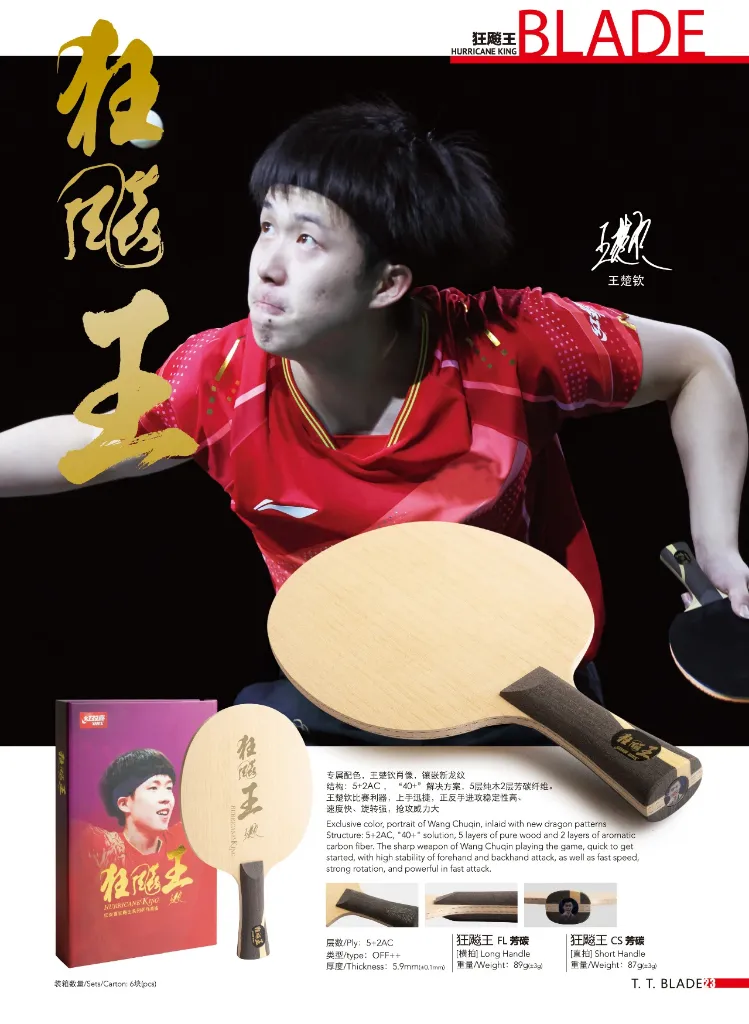
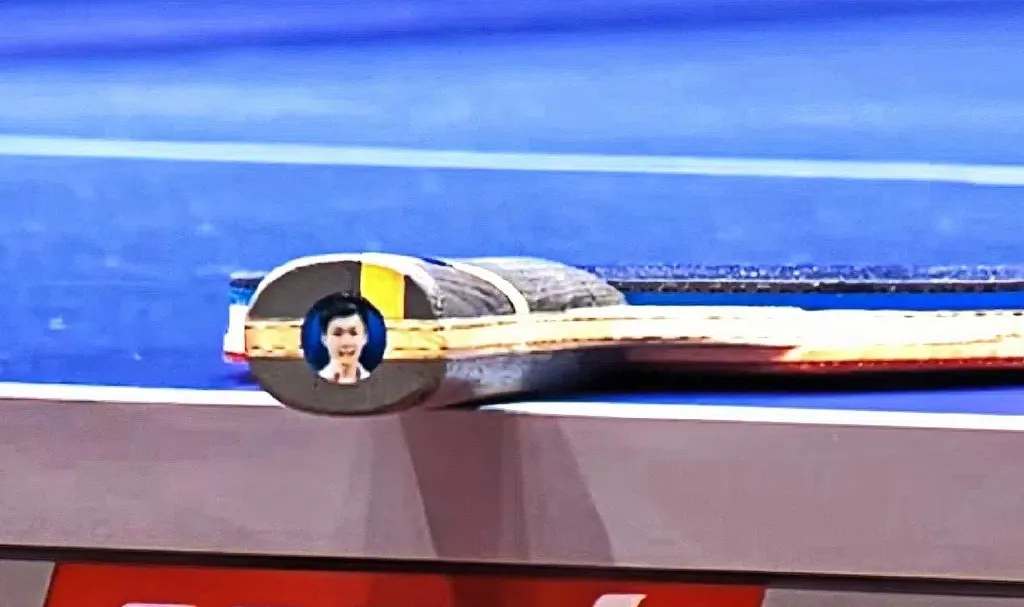
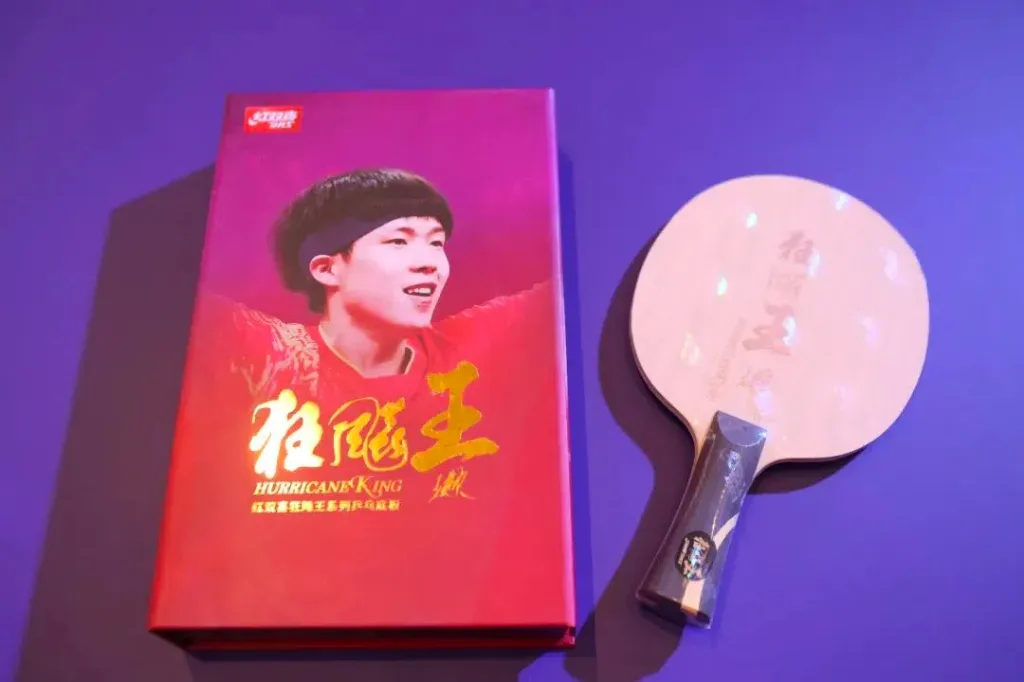
Wang Chuqin allegedly pairs the blade with DHS rubbers on both sides, making it a full in-house setup. On the forehand, he goes with DHS Neo Hurricane 3 National (blue sponge, ~42° hardness), a tacky rubber favored by many Chinese players for its high spin potential. On the backhand, he has used Hurricane 3 with a softer orange sponge since 2020. Still sticky but easier to handle, giving him more control, especially for backhand flicks and counters close to the table. Most pros slap on the Euro-style rubber for the backhand to get that extra speed, but Wang sticking with double Hurricanes says a lot. He’s clearly prioritizing touch and fine-tuned control over raw power.
This whole combo of Q968 and Hurricane rubbers is a perfect match for Wang’s current style. Lefty attacker, high pace, sharp timing, but still surgical with placement. Heavy loops when he wants them, delicate short game when he needs it. Clean balance.
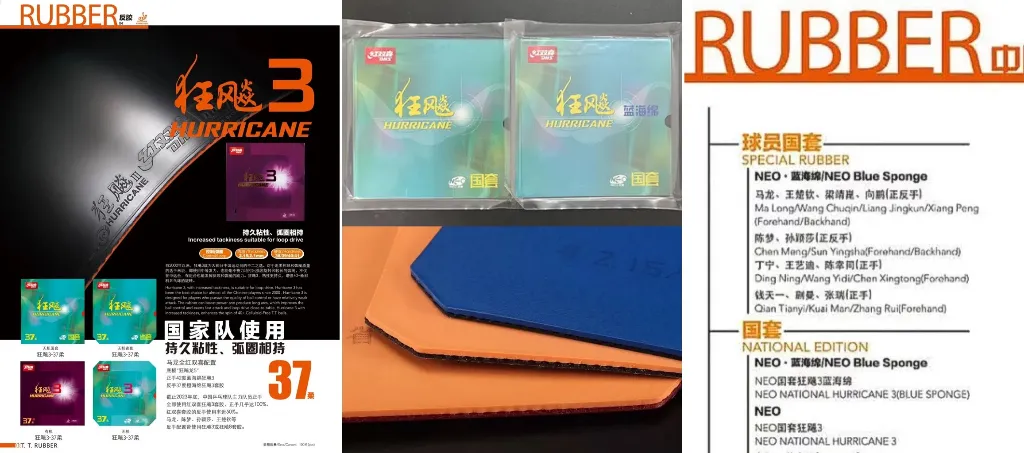
Side Note: The name “Hurricane King” originally honored former world champion Wang Liqin (no relation), who had a legendary blade that made waves back in the 2005 Shanghai World Championships. That kicked off DHS’s era of made-in-China blades. Later, DHS dropped more signature models, including Hurricane Hao (Wang Hao) and Hurricane Long (Ma Long). These blades kinda form a legendary “Hurricane” lineup in table tennis. Wang Chuqin’s Hurricane King, though, is completely different from Wang Liqin’s. His is officially named Hurricane King.Q or HK.Q – the “Q” stands for Qin. However, DHS and the market still refer to it as Hurricane King.
DHS W968, aka Hurricane Long 5 (2022)
Before switching to the Q968, Wang Chuqin used the DHS W968 blade for about a year, with Hurricane 3 blue sponge on his forehand and Hurricane 8 on his backhand, sometimes paired with the orange sponge from Hurricane 3. He was first spotted with it at the WTT Champions Macao in Jan 2022, where he ended a two-year singles title drought.3 That year, Wang skyrocketed to World No. 3, grabbed team gold at the World Team Championships Finals in Chengdu, and back-to-back WTT singles titles. What’s wild is that he didn’t have a coach working closely with him then and no clear training plan… but he had the W968 in hand, and it clearly clicked.
The W968 is a special version of the Hurricane Long 5, Ma Long’s signature blade model since it was introduced in 2013. It features a 7-ply aryl-carbon fiberboard with Pith-Film tech, where thick carbon layers are placed closer to the core.4 This gives the blade solid inner strength and explosive power when needed. It performs well on big shots but stays controlled on softer touches, making it effective for both defense and aggressive counters.
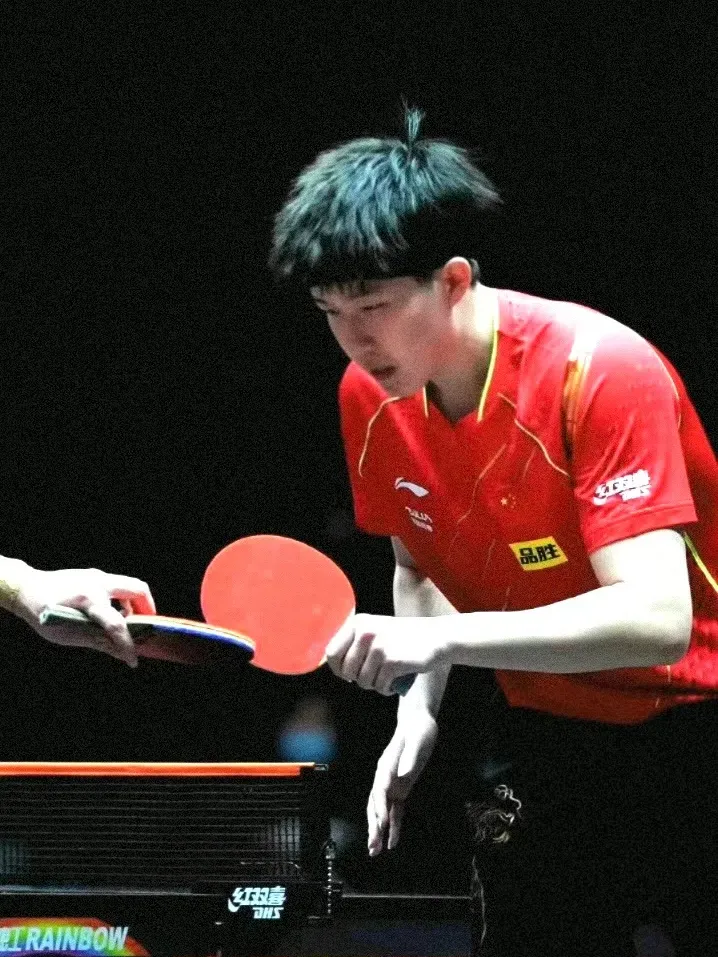

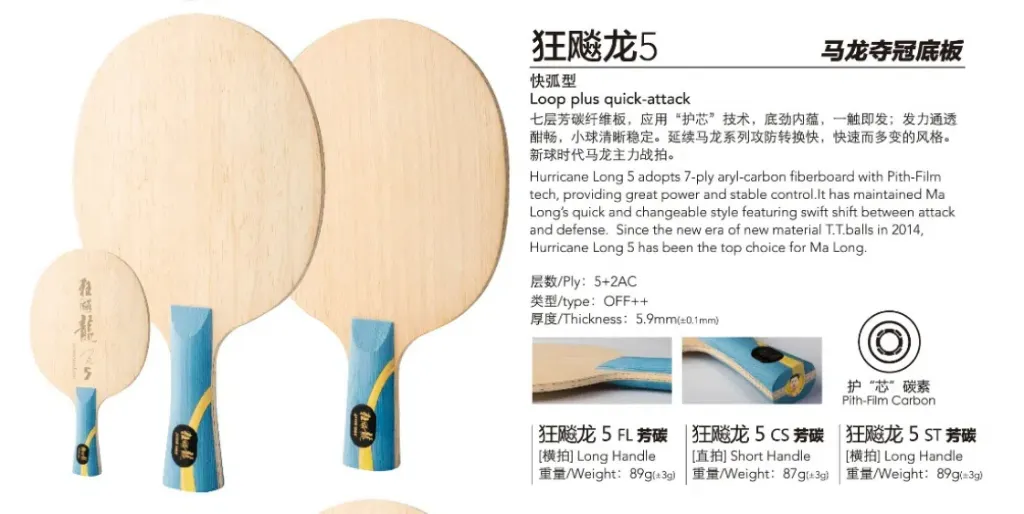
Changing to W968 marked the end of Wang Chuqin’s long run with the Butterfly Viscaria blade. Viscaria is a known “outer fiber” blade, where artificial fibers are placed just beneath the surface layer.5 That design boosts speed and bounce, great for fast-paced attacks and quick rallies. In contrast, DHS blades like the W968 use an “inner fiber” structure, with carbon layers closer to the core. This gives the blade a softer touch and longer dwell time, which means more control and better spin. Players focusing on precision and variation tend to go for inner fiber blades.
Back in 2018 and 2019, Wang’s backhand was already impressive, but the transitions between forehand and backhand weren’t always smooth. It’s reasonably assumed that around late 2021, Wang was trying to shift his style – more control, tighter transitions, and fewer of those wild, all-out shots. Switching to the W968 fit that change. Wang Chuqin started focusing more on balancing his forehand and backhand. Still aggressive but more stable and calculated.
It’s hard to say exactly how much the blade itself pushed that evolution, but moving to the W968 was clearly a step toward that new direction. It was a stepping stone toward the Q968 Hurricane King he would use by 2023. In fact, one could view the Q968 as simply the next evolution or a personalized version of the W968 that DHS crafted for Wang Chuqin as he advanced and started owning the world stage.
Butterfly Viscaria (2015 – 2021)
Before joining the DHS Hurricane blade club, Wang Chuqin spent his formative years playing with the classic Butterfly Viscaria. From around 2015 to 2021, this was Wang’s go-to blade in competition. Not a surprise, really. Viscaria became popular ever since Zhang Jike won Olympic gold with it in 2012. It is known for its crisp backhand feel and outer carbon construction, which we discussed above.
During those Viscaria years, Wang’s style leaned hard into aggression. His backhand was a major weapon, fast and fearless. But with that high-risk style came some inconsistency. That could be why he started rethinking his gear and overall approach. Switching from Viscaria to the W968 wasn’t just a blade change. It was part of a bigger shift in mindset and game strategy.
Looking back now, that move clearly worked. His game evolved. He became more balanced and more in control, and the results started to roll in.
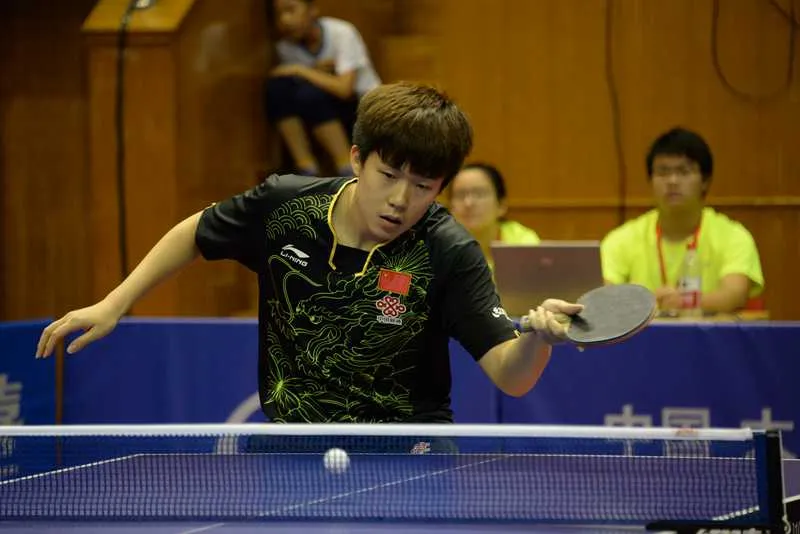
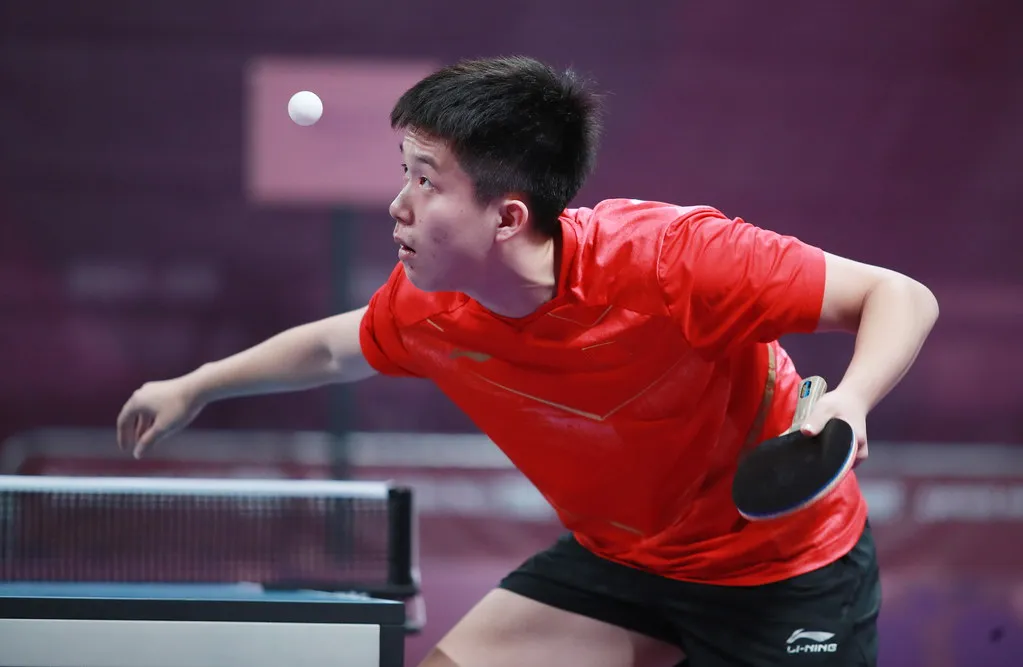

Racket Care: The Behind-the-Scenes Ritual
Taking care of your racket isn’t just a habit in the Chinese national team. It’s a full-on ritual. These players spend countless hours training and rely on their racket to respond consistently every day. The routine helps create a sense of control before stepping into a match.
A big part of this comes down to rubber maintenance. While most casual amateurs use one-time settings forever, the pros are constantly tweaking. Some Chinese players re-glue or replace rubbers every week or two. And it’s not just slapping on a new sheet. They’re super picky about everything. How they spread the glue, how much tension they stretch the rubber with, which direction the rubber corners point, etc. And yeah, no one else is allowed to touch their sponge. It’s personal territory, like a gunslinger who only trusts himself to clean his weapon. Wang Chuqin is no exception. He’s often spotted trimming and gluing his rubbers, and apparently has his own setup routine. From how many glue layers to how long he lets it dry, all to ensure the feel is right every time.
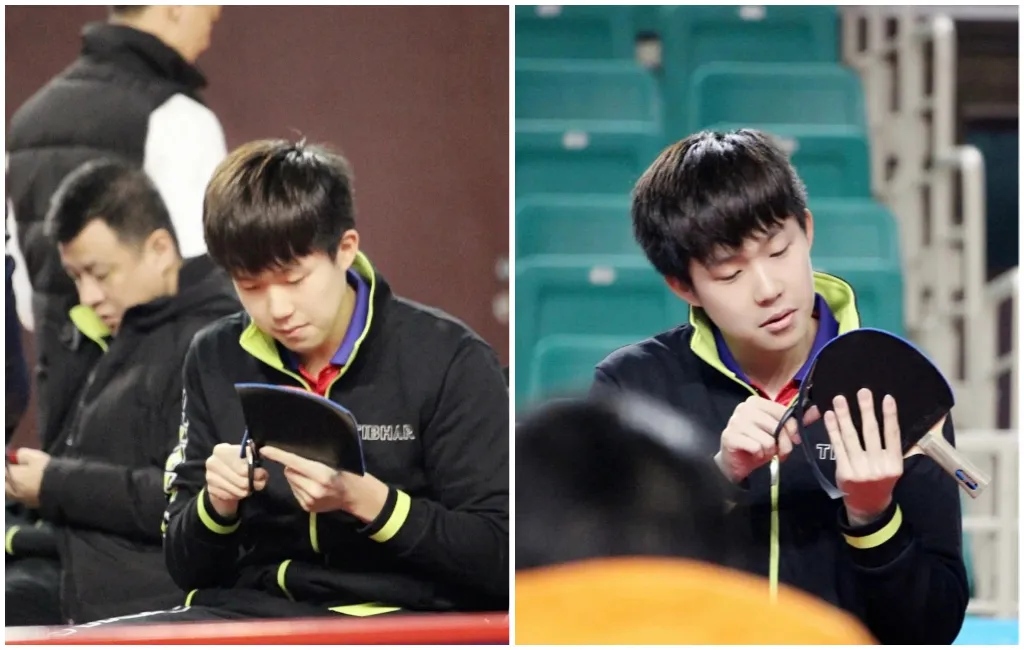
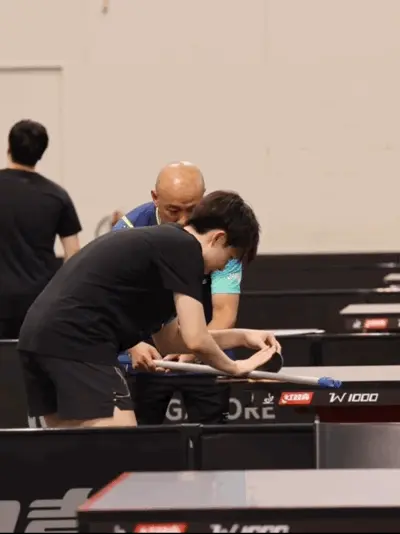

Beyond rubber work, blade care is just as serious. Top players get attached to one main blade and one spare, even if they come from a batch of “identical” ones. There’s always that one that just feels right. If something small goes wrong, like a splintered edge or a hairline crack, they don’t ditch it. They fix it. Wood glue, filler, whatever it takes. Some even use edge tape around the racket to protect it from dings.
However, pros don’t fix everything themselves. They send their rackets to the trusted repair studio when needed. During the 2023 Mixed Team Championships, Wang reportedly reached out to a local studio in Chengdu to get his blade fixed. During closed training before the Paris Olympics, he sent his main blade and spares there again. Maintenance brings consistency and, more importantly, confidence. When Wang rips a forehand loop, he knows that the ball will arc and dip as it did in practice. That trust comes straight from how dialed-in his racket is.
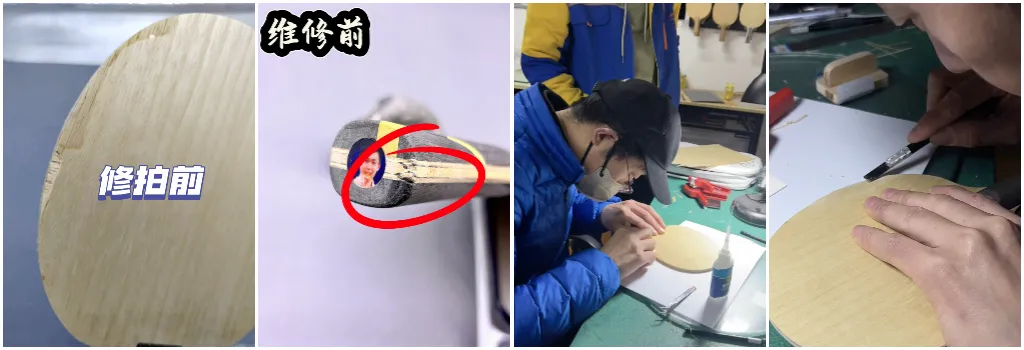
Racket-Related Drama: When Gear Meets Pressure
Even with all the prep in the world, sometimes a player’s racket becomes the unexpected center of drama. Wang Chuqin had a couple of those moments in the past. One happened during the 2024 Singapore Smash. The other unfolded at the Paris Olympics. (Updated on 05/21/2025: Who would’ve thought the racket drama happened again? This time, it was the umpires and officials at the World Championships. Details: Racket, Damaged. Again.)
Both showed just how deeply a player’s rhythm and confidence are tied to their gear.
Mid-Final Racket Switch
In the 2024 Singapore Smash final, Wang Chuqin was locked in a tight match against teammate Liang Jingkun. At 5-5 in the third game, Wang suddenly requested a play pause to change his racket. This is quite unusual. Players do carry backup, but only swap mid-game if there’s a significant issue, like a damaged rubber or a cracked blade.
Wang grabbed his spare racket, and as some observers noted, it took him a little time to “re-tune” to the new feel. That short pause allowed Liang to pull ahead, even reaching 10-7. But Wang stayed calm, pushed through, and edged out the game 13-11. He eventually closed the match in five games to take the title.
The issue seemed to be a bubble or damage on the forehand rubber, probably from constant hard-hitting. It was one of those rare moments when you see how much players rely on their feelings. Even a small defect can throw everything off.
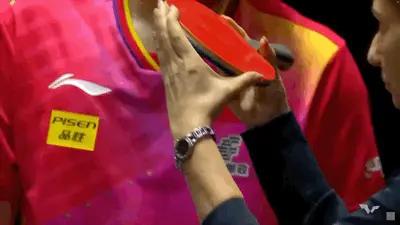
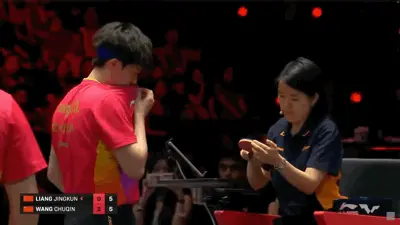
The Paris Olympics Racket Disaster
Then came the real disaster.
One of the most shocking Olympic table tennis moments happened to Wang in Paris. Right after his mixed doubles win, a photojournalist accidentally stepped on his racket and broke it completely on the courtside. It was one of the most infamous incidents that could happen to a player on the world’s biggest stage.
Honestly, I’m exhausted and can’t bring myself to go through it again, so I’ll just leave it here. Here are some of my thoughts in a previous post: Wang Chuqin and the Mystery of CNT’s Coaching System Neglect
Still, whether or not that broken racket directly led to Wang’s early singles exit in Paris, the timing was brutal. For pros like Wang, the racket is more than just gear. It’s something they’ve trained with every day for months. Losing it hours before a match like that can shake your focus and confidence. And when you’re playing at the Olympic level, even a slight emotional and mental shift can change everything.
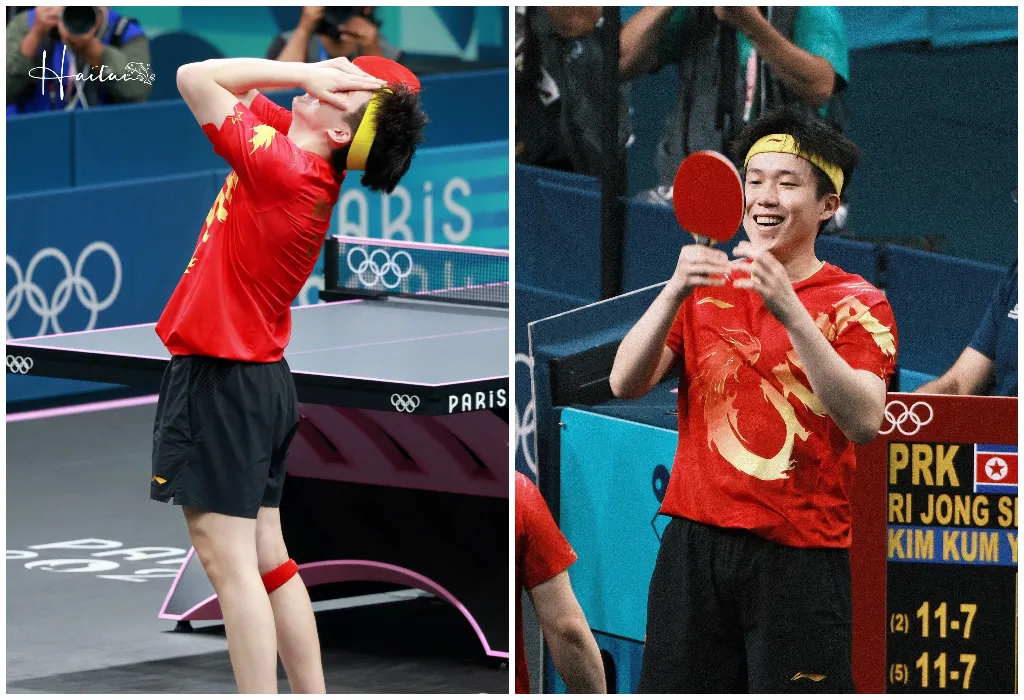
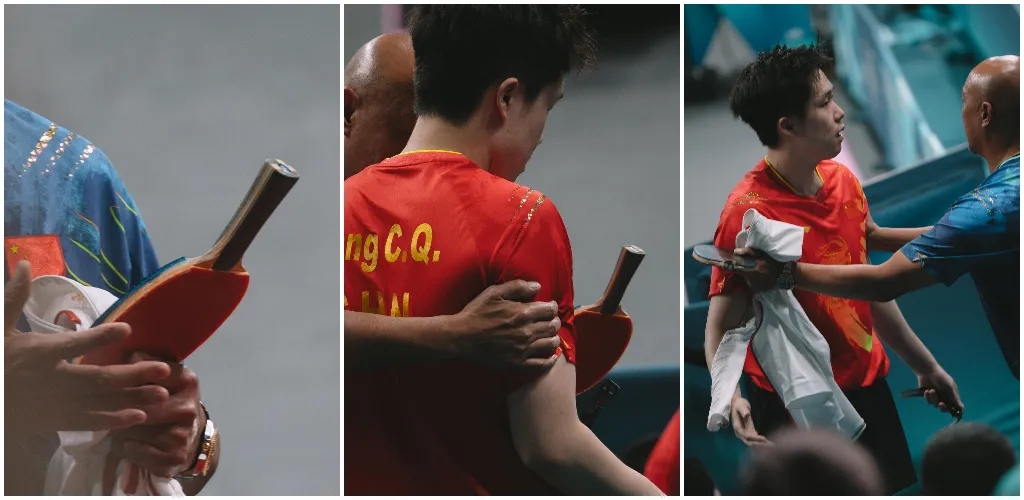
From the Viscaria days to the W968, and now the Hurricane King, each blade marks a chapter in Wang Chuqin’s growth. You can literally follow his career through the rackets he’s used. Starting out as a wild, aggressive teen, then sharpening into a more refined pro, and now standing tall as a powerful, well-balanced world-class player.
They’re more than just equipment. They’re part of his identity at the table.
References
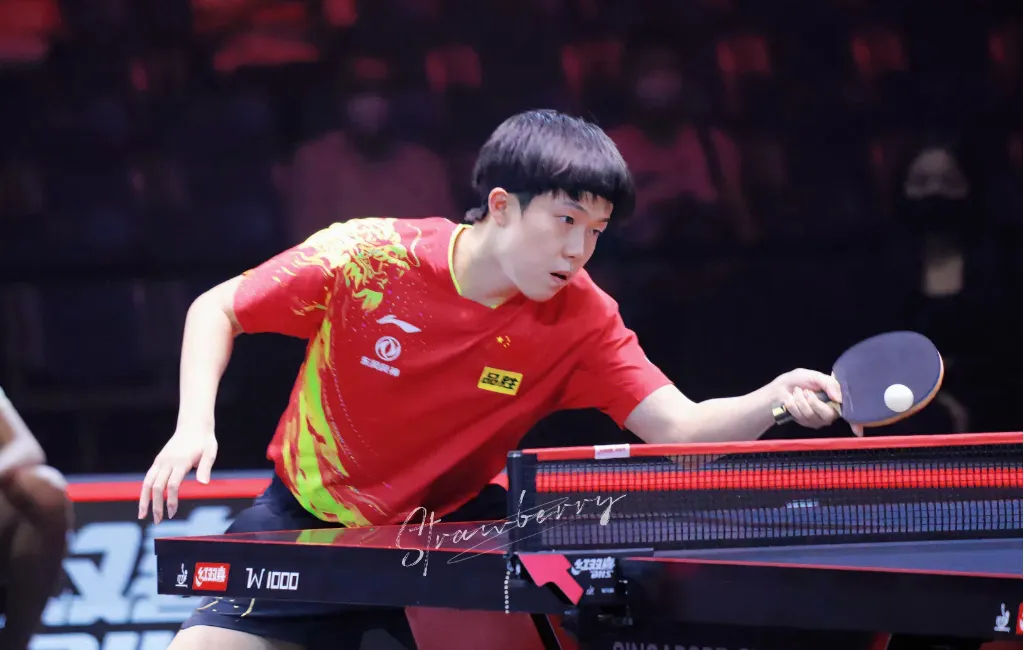

Leave a Reply